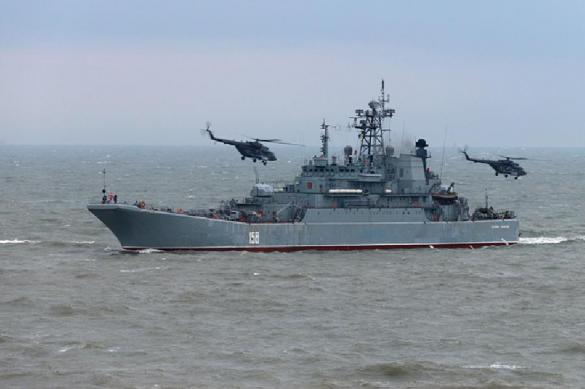NATO striking fleet to go to Crimea bypassing Montreux Convention
Experts discuss how the Montreux Convention may affect the balance of forces in the Black Sea. NATO and US fleets really want to establish their presence in the Black Sea and create a strike force, but they will not be able to pass through the Bosphorus, although Kyiv has been waiting for it for so long.

Reserve captain Sergei Gorbachev told Politnavigator publication that any changes in the provisions of the document will harm all the Black Sea countries.
It is worthy of note that the US is not a signatory of the 1936 convention on the use of the Bosphorus and Dardanelles.
The only option for building up forces for the enemy is to transfer them along the Danube. Technically, the United States can indeed transfer forces along the Danube. The "grain corridor” may suit the task well, Gorbachev believes.
Turkey's position is based on a long-standing principle — "no one except the Black Sea powers has anything to do in the Black Sea.”
Russia once proposed folding the map of the Black Sea region in half. This would put the southern part of the region under Turkey's control, whereas Russia would take the northern part. Simple as that.
Russia can also use the Volga-Don Canal to transfer its fleet to the Black Sea. The "inter-theater manoeuvre of forces” was practiced many years ago, when small missile ships would cross the Volga-Don from the Caspian Sea to Azov and Black Seas. They could thus act where required and when.
"Formally, most warships of the NATO navies belong to the class of light warships. Their standard displacement is less than 10,000 tons. The maximum caliber of their guns does not exceed 203 mm. The Montreux Convention excludes missile weapons as such,” the expert told Pravda.Ru.
"To avoid restrictions on traveling through the Bosphorus and Dardanelles straits, NATO naval ships can infiltrate the sea one by one sequentially before building an operational force there for up to 21 days,” he added.
This is not going to violate the Convention as the tonnage of ships that each power will have will be smaller than that the Convention regulates for non-coastal powers in the Black Sea.
"For example, even three guided missile destroyers of the Orly Burke type will have a total displacement of less than 30,000 tons. They can stay together in the Black Sea for 21 days as per Convention regulations. The rules for other NATO countries are the same,” the military expert said.
In addition, they can attach a "humanitarian mission” to their presence in the Black Sea to ease restrictions for warships to travel through the straits.
In general, everything depends on the political will of NATO and Turkey, also a NATO member.
The Russian Defence Ministry earlier announced that all NATO warships entering the Black Sea would be "in the crosshairs” of Russian coastal systems such as Bal and Bastion, let alone warships and aircraft of the Black Sea Fleet.
"The warships that remain in the waters of the Black Sea will not be able to cause significant damage either to the Russian Black Fleet or to the Russian territory. They are being monitored constantly. If missiles are launched, the ships would last only for five or ten minutes. However, such a clash will quickly lead to an exchange of nuclear strikes that no one wants," a representative of the Defence Ministry earlier told the media.
Subscribe to Pravda.Ru Telegram channel, Facebook, RSS!


